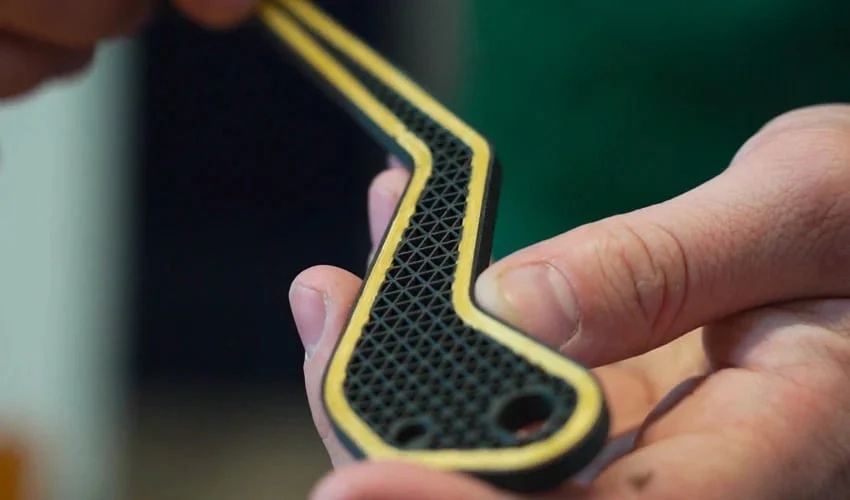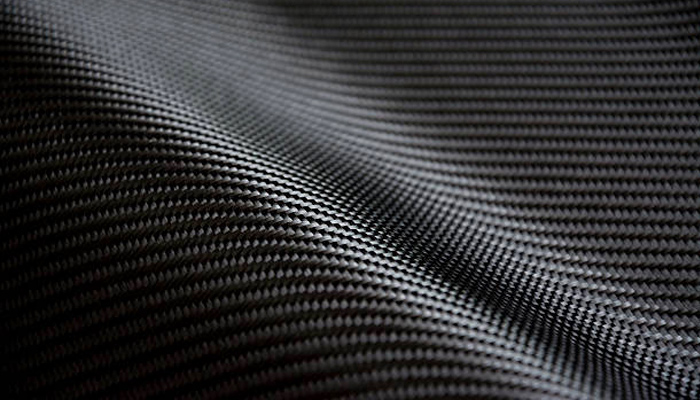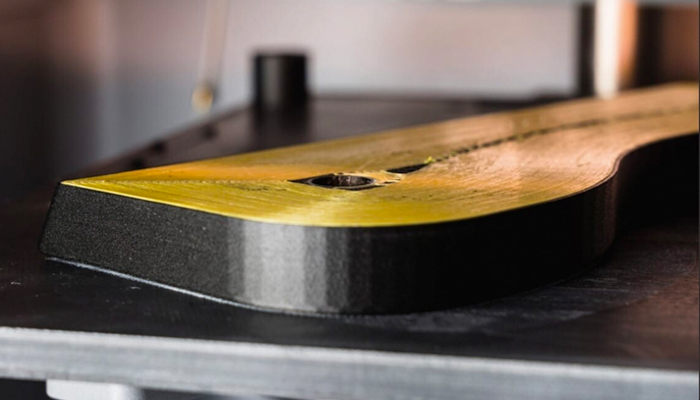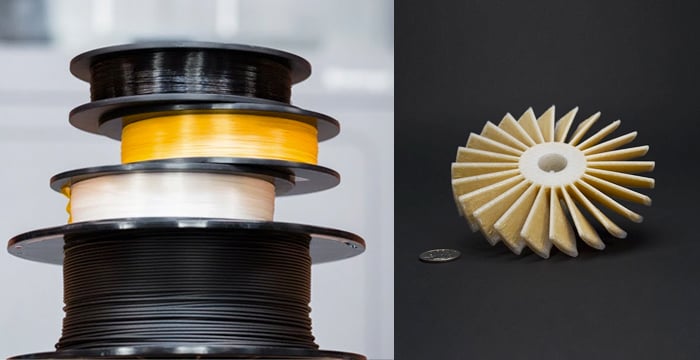All You Need to Know About Kevlar 3D Printing

Aramid fiber is a synthesized polyamide widely used in additive manufacturing and characterized by its high strength. It was first developed in 1965 by chemist Stephanie Kwolek, a pioneer in polymer research who won several patents and awards during her career. The term Kevlar® was registered by the DuPont company, for which Kwolek works, and began to be marketed in 1972. Thanks to its interesting mechanical properties, this synthetic plastic is one of the strongest on the market and is used in a wide variety of applications. As well as being compatible with many traditional manufacturing methods, Kevlar is used in 3D printing to create final parts. Find out more about this polyamide and its possibilities in the additive manufacturing industry in this comprehensive guide.
Material Characteristics
Kevlar is a type of plastic which, according to its scientific classification, is defined as a synthetic aromatic polyamide. In other words, it is an artificial substance composed of interconnected molecules. Aramid fibers belong to the family of plastics obtained by polymerization, i.e. the assembly of long chains of molecules. Kevlar fibers, in particular, are arranged in regular, closely interlaced parallel lines, making them extremely strong. There are two types of aramid fiber:
- Kevlar 29, i.e. the fiber as obtained after its manufacture. It is mainly used to reinforce belts or fabrics.
- Kevlar 49: obtained when the fibers are combined with a resin to form a composite material. These fibers require surface treatment to promote bonding with the resin.

Aramid fiber is characterized by high strength and resistance
Yes, everyone talks about the strength of aramid fiber, but what exactly is it? Kevlar has ten times the tensile strength of steel, thanks to the cross-linking of internal chains by hydrogen bonds. It also offers high ballistic resistance. The fibers are wound so tightly that it is almost impossible to separate them. So when a bullet or projectile strikes at high speed, the fibers trap, absorb and dissipate its energy. At the same time, the molecular chains are perfectly extended and aligned, providing a defensive barrier against cuts and punctures. Finally, the material is intrinsically resistant to heat and flame, making it an ideal choice for protection against thermal hazards up to 425°C.
Kevlar 3D Printing
As mentioned above, Kevlar is a plastic that is compatible with additive manufacturing. Thanks to the material’s versatility, its use in the 3D printing industry is expanding rapidly. Indeed, it is an ideal choice when it comes to adding strength and flexibility to final parts. In terms of quality, Kevlar’s long, regular molecular structure favors a very smooth finish and high resolution of the printed layers.
FDM 3D printing is undoubtedly the most widespread technology for using aramid fiber. Due to its composition, Kevlar is more readily available in filament form, although proper equipment is required to ensure its correct use. When printing parts with Kevlar, several aspects need to be taken into account. As Kevlar is a filament made up of long, uninterrupted molecules, there is a greater risk of the material getting stuck in the nozzle, so care must be taken to ensure that the extruder is at least 4 mm wide. Kevlar’s melting temperature is very high, so the 3D printer used must be capable of reaching high temperatures. Finally, it’s important to pay attention to the first layer printed, as Kevlar is not a material that adheres easily; in this case, the use of glue can be very useful.

Photo Credits: Markforged
Although it is the most widespread, extrusion manufacturing is not the only technology compatible with Kevlar. Some organizations and research projects are using aramid fiber in resin 3D printing. Microscopic aramid fibers are mixed with resin to achieve the right viscosity. The resulting parts are more resistant to wear and tear.
Material Applications and Prices
Thanks to its high resistance to heat, tensile strength and toughness, kevlar is widely used in 3D printing for the most demanding applications. With characteristics similar to those of certain metals, but offering greater lightness, it is very useful in industries such as defense, automotive, consumer goods and aerospace. At the same time, its shock-absorbing and anti-abrasion qualities make aramid fiber a good choice for the manufacture of industrial machine parts that move against each other.
From an economic point of view, kevlar 3D printing is not inexpensive, especially for individuals. As mentioned, the use of aramid fiber in additive manufacturing requires a suitable machine capable of withstanding high temperatures. For this, it’s important to invest in high-quality equipment. At the same time, the material costs around $100 per 50-meter spool (5 times more than PLA). In many cases, when you want to benefit from the advantages of this material, it’s best to opt for a 3D printing service that manufactures parts on demand.

Do you use Kevlar 3D printing? Let us know in a comment below or on our LinkedIn, Facebook, and Twitter pages! Don’t forget to sign up for our free weekly newsletter here, the latest 3D printing news straight to your inbox! You can also find all our videos on our YouTube channel.
*Cover Photo Credits: Mark3D







